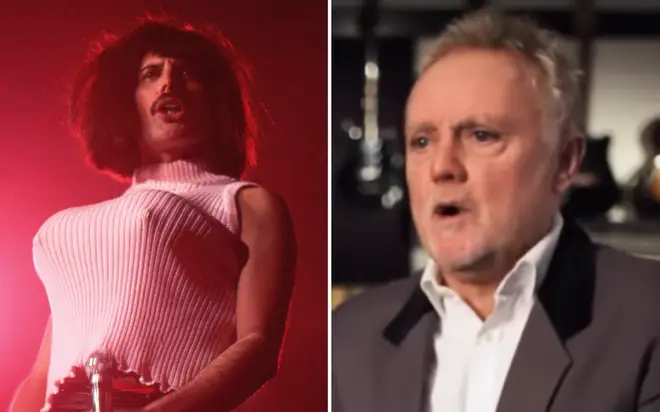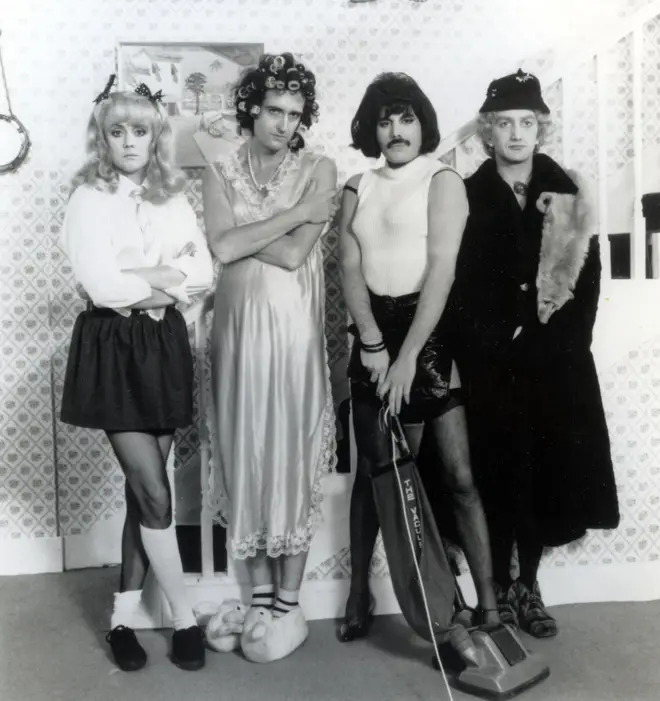On Air Now
The Smooth Late Show with Martin Collins 10pm - 1am
24 April 2024, 15:47

Queen were pioneers when it came to music videos.
As a medium, music videos were predominantly performance-based, showing off a band's flair and pizazz whilst playing their most recent song.
They were usually recorded for sections on pop chart television shows, for when a musician or band couldn't appear in person.
But that all changed in 1975 when flamboyant rockers Queen released the music video for 'Bohemian Rhapsody'.
There's plenty of debate over who actually released the first ever music video as we know them today, with Bob Dylan's 'Subterranean Homesick Blues' or The Moody Blues' 'Go Now' considered to be the first.
Though, the celebrated and now-iconic music video for 'Bohemian Rhapsody' was key to the song's global success, used as a means to watch Queen's operatic rock masterpiece from wherever around the world on whatever television channel.
From then onwards, music videos became central to marketing campaigns, and even ignited the spark for what would result in MTV.
Seven years later, the band that inspired MTV had music videos which were banned from the platform, with drummer Roger Taylor calling the cable channel "narrow-minded".

Queen - Body Language (Official Video)
In a rare archive interview featuring on the latest episode of Queen's YouTube series Queen: The Greatest, Taylor was livid about MTV's reaction to the music video for 'Body Language'.
After the 1982 single was released, MTV deemed the video too controversial, with Queen becoming the first band to be censored from the channel.

Queen's greatest music videos: Brian May breaks down band's biggest hits | Smooth's Video Rewind
The erotic bathhouse scenes were adjudged to be unsuitable for broad audiences at the time, much to the frustration of the band.
Not that it affected the success of 'Body Language', with the funk-inspired song from the album Hot Space reaching number eleven of the US Billboard charts,
Becoming their fifth-biggest single across the pond, 'Body Language' even outperformed classics like 'Radio Ga Ga' and 'Somebody To Love'.

Two years later, another MTV ban for 'I Want To Break Free' meant the song stalled outside of the top fifty in the charts.
Banned because Freddie Mercury, Brian May, John Deacon, and Taylor were all dressed in drag, imitating characters from soaps like Coronation Street, it infuriated Taylor.
In the unearthed interview from the latest episode of Queen's YouTube series, Roger says: "Well MTV were very narrow-minded."
"It was Whitesnake, and f**king Whitesnake, and then another Whitesnake track. And they decided they didn’t think that men in drag was 'rock enough' I guess, and so they didn't play the video."

Queen: On Video (Episode 25)
Given their pioneering status when it came to music videos, the episode then moves on to Freddie's thoughts about how the medium progressed in such a short period of time.
"Well things have come a long way, of course, they're becoming film budgets aren't they? And the technique and everything is, sort of, improved vastly, so, I mean, you can come up with all kinds of things."
"I remember that in 'Bohemian Rhapsody' we wanted these multiple images, and at that time the only way we could only get it was to use a prism," Mercury continued.
"And then we wanted a sort of jagged effect and we had to shake the cameras, somebody had to kick it!"
When asked about the future of music videos throughout the remainder of the decade, Freddie shrugged: "It's beyond me as well, I don't know what’s going to happen next."